Shop
A bevor is an element of a helmet or a separate element of head protection in the form of half-collar, which typically covers the chest (and sometimes shoulders) and encloses the throat, chin, and often ends at the upper lip. Bevors were developed for and usually used with helmets such as Salad or Chapelle (and
The barbute was a common Italian infantry helmet of the XV century. A barbute was always visorless, but its “face” came in three basic forms: open, T-shaped, or Y-shaped. Its major innovation was its extension of the “cheeks” towards the middle of the face, which provided more protection while maintaining excellent visibility and breathing capability.
Our XV Century Italian Bevor is based on the sallet helmet with bevor from the collection of Churburg Castle (Castel Coira) in South Tirol. It is intended to accompany our XV Century Sallet, but will add protection and style to any sallet helmet. The bevor can be crafted from a variety of metals and in
Our Maximilian Breastplate is forged into a shallow globose form with three sprays of fluting radiating from the waist. There are seven fluting lines in the center spray and 5 in each of the side sprays. The outermost fluting on each of the side sprays is a single sided fluting, more akin to a step.
Medieval breastplate armor with a decorative V-shaped rib Churburg Castle offers a lot of excellent examples of the finest medieval armor. It was founded in 1253-1259 by Henry de Montfort, who was a bishop of Chur. The name of the castle comes from the name of rank of this medieval noble. The castle is located
The Cuirass – a common name for armor consisting of one or more whole interconnected metal plates to protect the torso. This is our version of a typical cuirass from Western Europe in the XVI century. It’s forged from 1.5mm cold rolled steel. The base model includes: a matte polish, steel rivets, and steel factory-produced
The classic Brigandine – hardened plated armor overlayed by a textile outer shell. A symbol of chivalry, the Brigandine was a fashion statement in addition to a warrior’s garb. It was often covered with velvet with matching arms, and was constructed with functional, yet decorative rivets. During the XIII-XIV centuries the brigandine was a typical
Armets first appeared in the XV century and saw widespread use across Europe in countries such as Italy, Spain, France, and England. It is a fully enclosing helmet and has multiple articulation points in the visor, allowing for different levels of “openness”. Also of note is the tapering of the form at the neck, which
A breastplate is the part of plate armor which covers the front of the torso. As separate armor it appeared at the beginning of the XIV century. The earliest records of breastplate usage are mentioned in description of the armor of Edward III, king of England. This manuscript was made by Gerard deTournai between 1337 and
The armorers and blacksmiths of the XV century were constantly searching for a more natural way to lay steel plates of armor over one another. The question was how to combine high safety properties, articulation, and of course, a stylish look. The answer “came” from crustaceans. The steel plates of the cuirass overlap each other
There are not many historical sources telling us a story about the helmets of the X – XI centuries. However, one of the most famous is the XI century Bayeux Tapestry (Tapisserie de Bayeux). On different sections of the tapestry, we can see warriors wearing conical helmets with nasal elements. Most of the helms illustrated

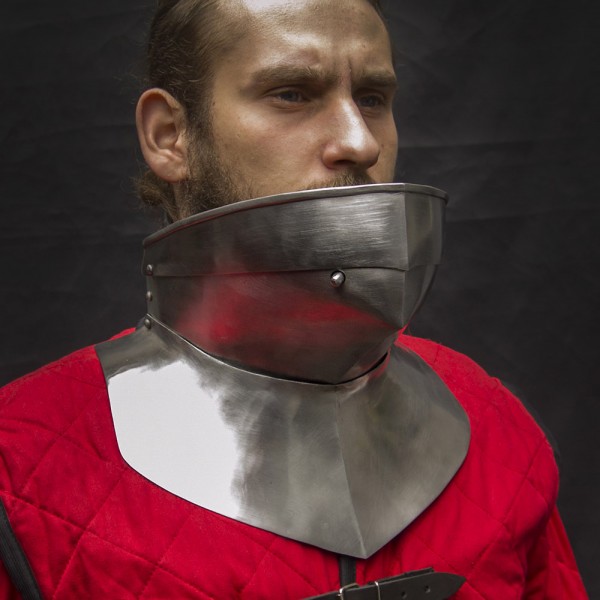
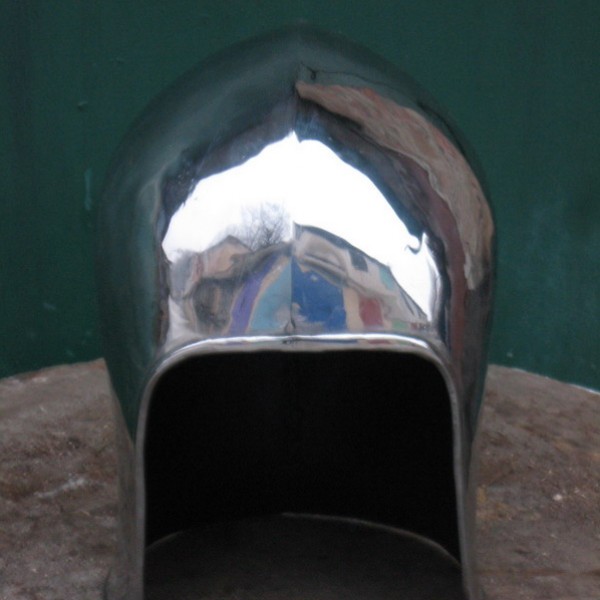
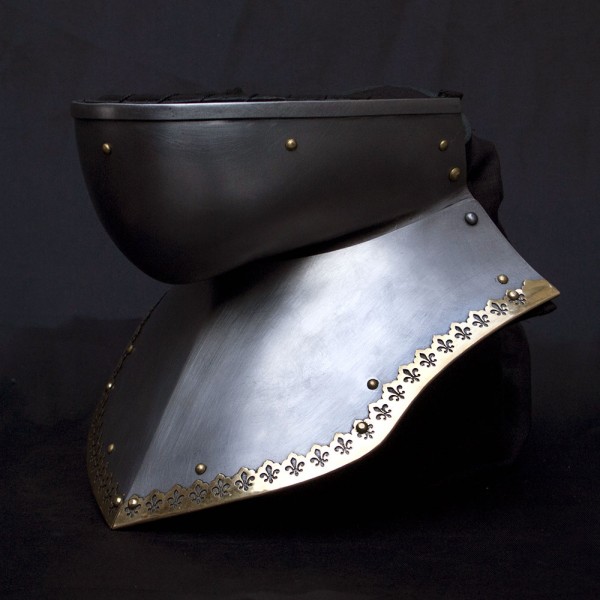
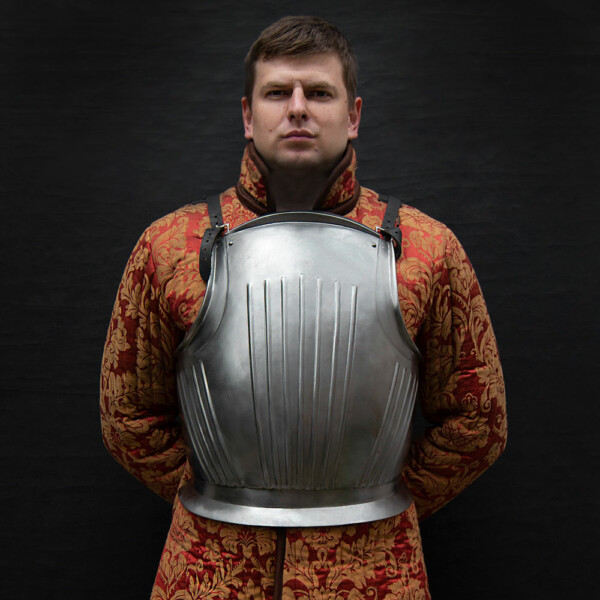
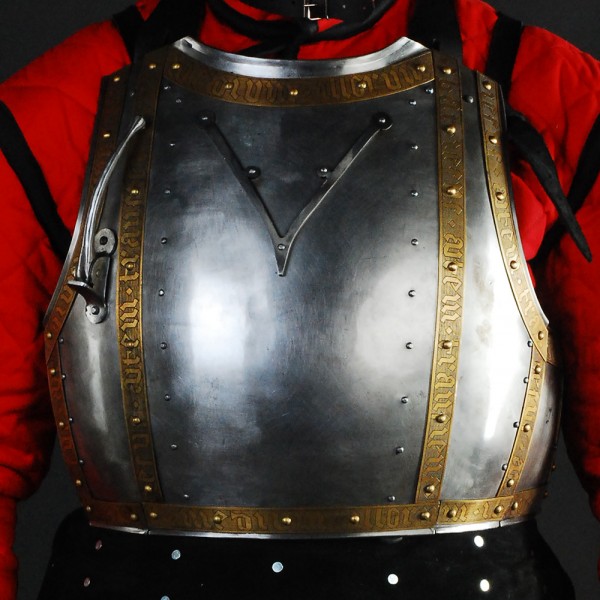

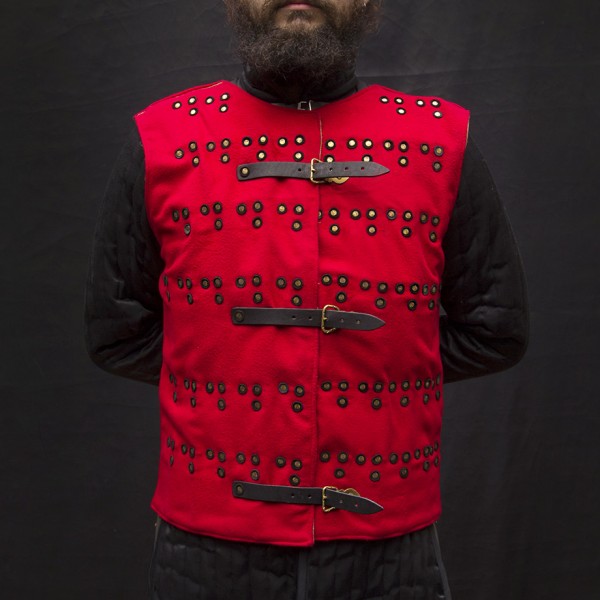
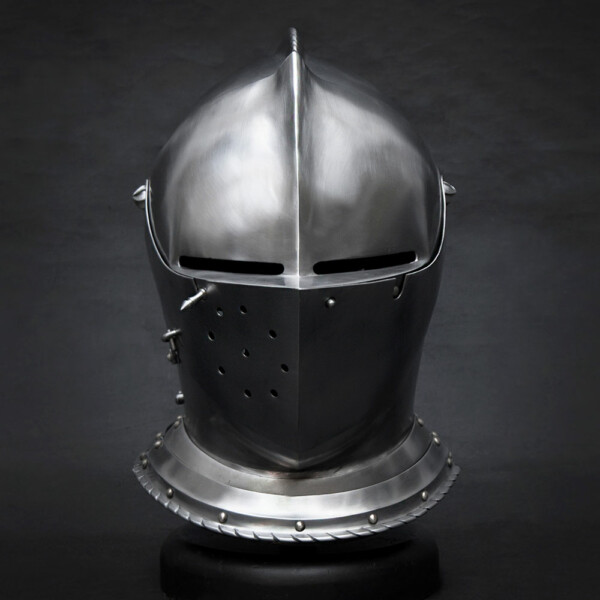
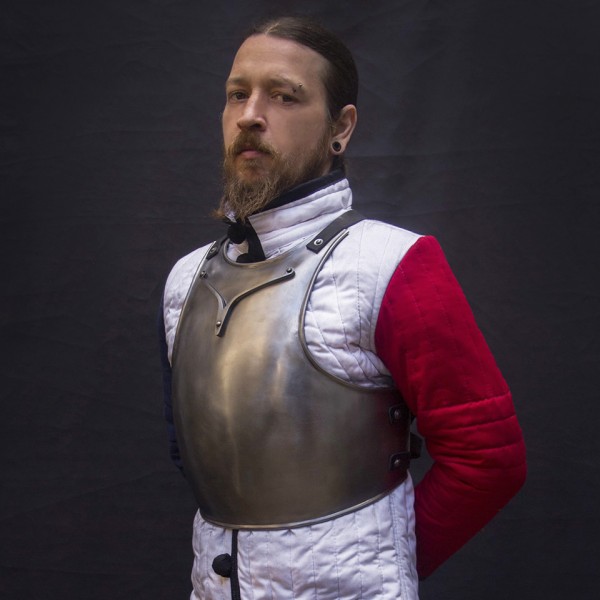
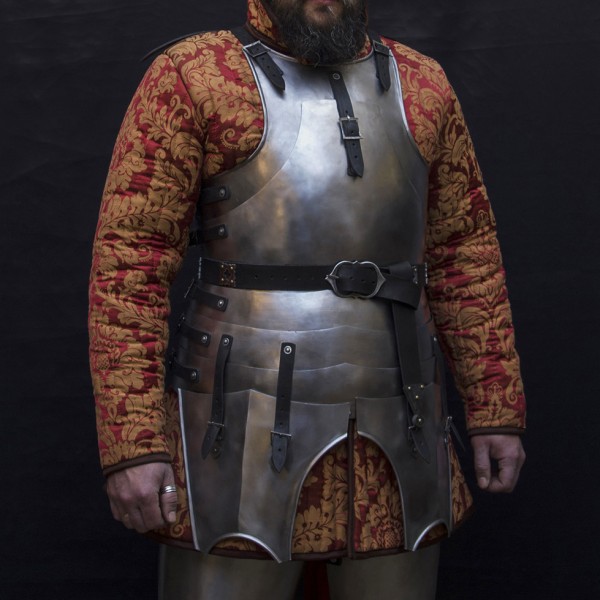
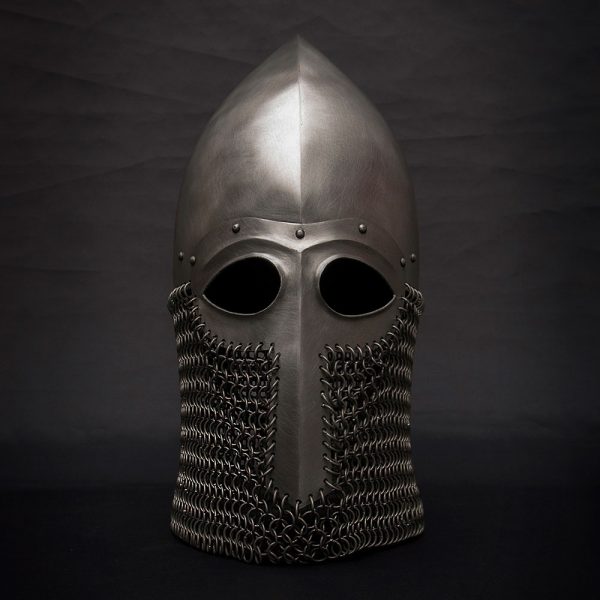
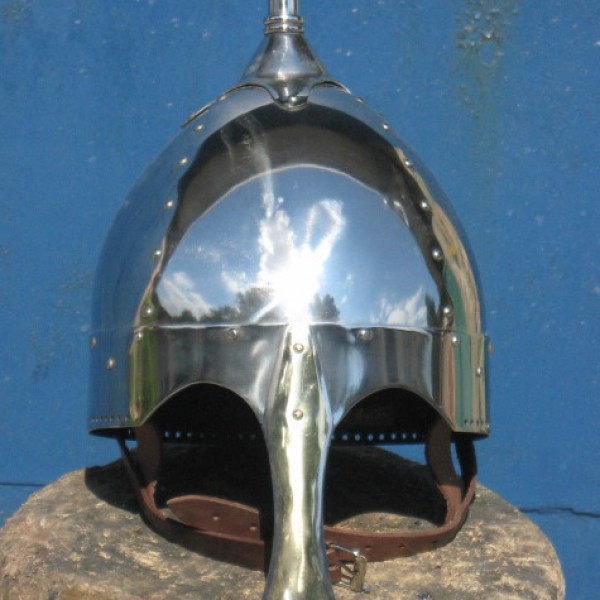
 Shop
Shop